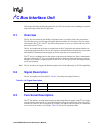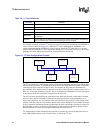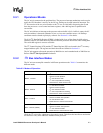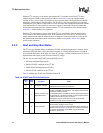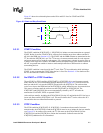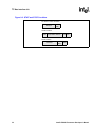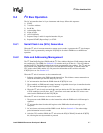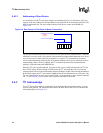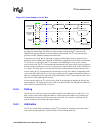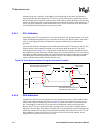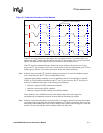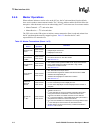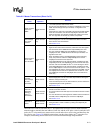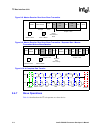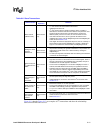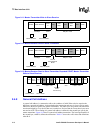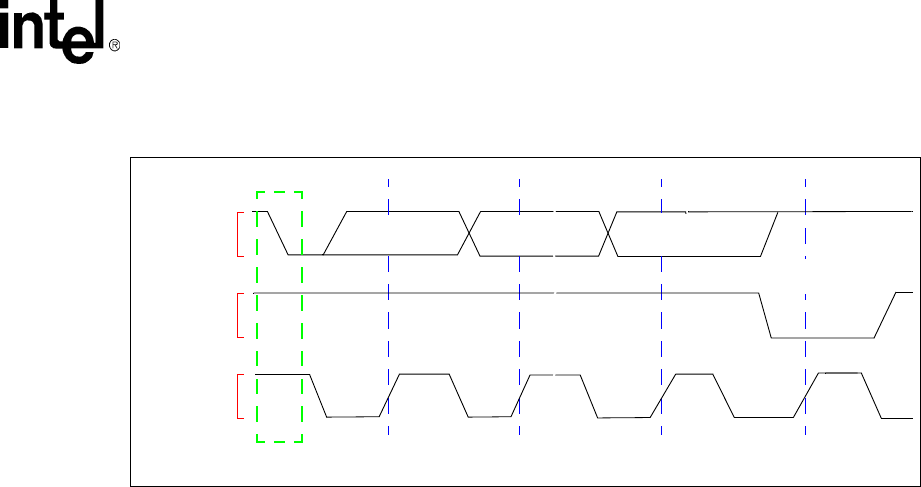
Intel® PXA255 Processor Developer’s Manual 9-9
I
2
C Bus Interface Unit
In master-transmit mode, if the target slave-receiver device cannot generate the acknowledge pulse,
the SDA line remains high. The lack of an acknowledge NAK causes the I
2
C unit to set the
ISR[BED] bit and generate the associated interrupt when enabled. The I
2
C unit automatically
generates a STOP condition and aborts the transaction.
In master-receive mode, the I
2
C unit sends a negative acknowledge (NAK) to signal the slave-
transmitter to stop sending data. The ICR[ACKNAK] bit controls the ACK/NAK bit value that the
I
2
C bus drives. As required by the I
2
C bus protocol, the ISR[BED] bit is not set for a master-
receive mode NAK. The I
2
C unit automatically transmits the ACK pulse after it receives each byte
from the serial bus. Before the unit receives the last byte, software must set the ICR[ACKNAK] bit
to 1 (NAK). The NAK pulse is sent after the last byte to indicate that the last byte has been sent.
In slave mode, the I
2
C unit automatically acknowledges its own slave address, independent of the
value in the ICR[ACKNAK] bit. In slave-receive mode, an ACK response automatically follows a
data byte, independent of the value in the ICR[ACKNAK] bit. The I
2
C unit sends the ACK value
after it receives the eighth data bit in a byte.
In slave-transmit mode, the I
2
C unit receives a NAK from the master to indicate the last byte has
been transferred. The master then sends a STOP or repeated START. The ISR[UB] bit remains set
until a STOP or repeated START is received.
9.4.4 Polling
To poll devices on the bus, the processor needs to send just the address byte over the I2C (i.e. no
data is read o written after sending the address). Polling requires the address to be loaded in the
ISAR and both start and stop bits set at the same time in the ICR. After this is finished, the I2C
must do a dummy read to ensure the proper behavior.
9.4.5 Arbitration
The I
2
C bus’ multi-master capabilities require I
2
C bus arbitration. Arbitration takes place when
two or more masters generate a START condition in the minimum hold time.
Figure 9-5. Acknowledge on the I
2
C Bus
1
2-7
8
9
SCL from
Master
Data Output
by Receiver
Data Output
by Transmitter
Clock Pulse
for Acknowledge
SDA released
SDA pulled low
by Receiver (ACK)
Start Condition
∼
∼
∼
∼
∼
∼
∼
∼
(SDA)
(SDA)



